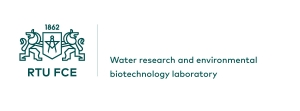Funding source:
European Regional Development Fund (ERDF) project
Duration:
2010- 2013
Collaboration:
The Institute for Environmental Solutions (http://www.videsinstituts.lv/en/news)
Brief description of the project:
Recently biobutanol as the representative of the 2nd generation of biofuels has attracted a lot of interest. This compound is characterized by octane numbers similar to gasoline thus it can be used in metor vehicles without dilution or mixing which is not the case of bioethanol.
Hydrolysis is used to release the sugars, pentoses and hexoses within the material. Weak acid hydrolysis generates not only the sugars but also compounds which may inhibit the fermenting microorganism. This type of hydrolysis is unspecific since the acidic environment and high t promote the degradation of the released sugars whereupon the hexoses are degraded to hydroxy-methylfurfuraland the pentoses to furfural. If lignin is present, aromatic monomers are released. The limitations, mainly the lack of pentose utilization by the fermenting microorganism and the generation of fermentation inhibitors. The generation of inhibitors is less pronounced during enzymatic hydrolysis process where fungal enzymes specifically attack cellulose.
A problem specific for LR, namely the introduced hogweed can be mentioned. By designing a process which converts this type of waste into biofuels, 2 problems would be solved, both the disposal and energy production.
The potential of the hyperspectral data have been recently demonstrated for the identification of plant species.
The fermentation of biobutanol is in many ways similar to bioethanol fermentation. Until 1950-ies butanol was produced from the sugars using ABE process (acetone, butanol, ethanol). The process used Clostridium acetobutylicum and yielded a ratio of 6:3:1 of butanol, acetone and ethanol. However this process had an important problem which was the inhibition of the fermenting microorganism already at 2% of butanol in the fermentation broth. This was the reason why bioethanol took over.
The main objective of this Project is to develop sustainable technology for the use of waste materials and their conversion into biobutanol, the 2nd generation biofuel. This no-waste technology will be as economical as possible and thus available to many local enterpreneurs. The agricultural and forestry waste include weeds, small branches and tree tops and the environmental waste – the washed out algae. These materils can all be used for biobutanol production.
